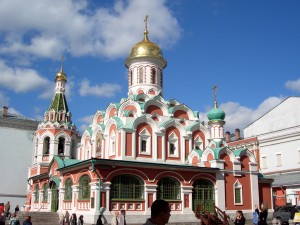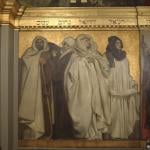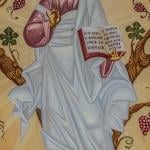“If you’ve spent any time thinking about a chivalric order lately…” With these words do Happy Menocal and John Swansburg open their Slate piece on Malta and its guardian knights. Surely it wasn’t meant to, but the phrasing makes me think of an ad for a private school. All too easily, I can imagine the parents of my old neighborhood telling each other, “Dustin’s a shoo-in for the Order of the Bath, but we’ve gotten him on the waiting list for the Order of the Garter” or “The admissions director for the Prussian Order of the Black Eagle was all over Meghan, but we think those dueling scars are a little on the vulgar side.”
The article’s worth a read, though. It begins with a recounting of the 1566 siege, during which 500 knights and a few thousand auxiliaries held the island against a force of 22,000 Turks:
The ensuing siege was bitter, even by 16th-century standards. The Turks decapitated and crucified captured knights; the knights retaliated by decapitating Turks and firing their skulls from their cannons. But thanks to the savvy leadership of the septuagenarian knight Jean Parisot de la Vallette—and thanks to some very good luck—the knights managed to keep the Turks from scoring a decisive victory. With the rough seas of winter bearing down on them, the Turkish fleet returned to Istanbul empty-handed. Christendom had been saved, and the Turkish advance into the Western Mediterranean turned back. (For a terrific account of the siege, read Roger Crowley’s Empires of the Sea.)
From there, it moves into a description of Malta’s current-day tourist attractions, including the “fantastically baroque” Co-Cathedral of St. John:
As we walked through the cathedral, our eyes were drawn upward, toward the barrel-shaped ceiling, which is decorated with an elaborate cycle of oil paintings by the Calabrian knight Mattia Preti, who depicted the life and death of John the Baptist, the order’s patron saint. The church’s most impressive achievement, however, is right below your feet. The spectacular floor is made up of 350 polychrome intarsia marble tombstones, which pay homage to the generations of knights buried below. Each tombstone tells the story of an individual knight, with vivid, often macabre imagery and complicated heraldic symbols. (Several of the tombstones would have made excellent Grateful Dead album covers.) Latin inscriptions enumerate the good deeds of the knights and occasionally offer pointed reminders to those still walking the Earth. “Flecte lumina, quisquis es, mortalitatem agnosce,” reads one. “Bend down with your lighted candles, whoever you are, and acknowledge your mortality.” On the tombstone belonging to Fra’ Gaspar de Figuera, a smiling skeleton sits atop a clock, bearing this message: “Venit hora eius. Veniet hora tua”—”His hour came. Yours will, too.” Nothing like a reminder of your inevitable demise to make you appreciate your holiday.
I don’t know about you all, but they had me at the macabre grave markers. In Greyfriars’ Kirkyard, in Edinburgh, every other monument features reliefs of winged hourglasses, or skeletons dancing in burial-sheets, or some other motif that has the effect of reminding visitors: “Booga, booga! You’re gonna DIE!” The same is true of headstones in America’s colonial-era cemeteries: at the peak of the stone is a winged skull. Funny thing about death’s heads: they look cool and eerie carved into 300-year-old marble, but ridiculous carved into my 39-year-old bicep.










